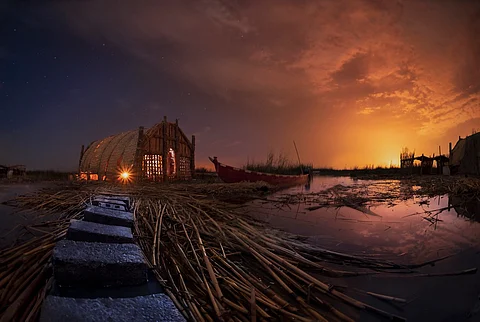

A new study reveals that the Sumerian civilization, known for innovations like writing and the wheel, was shaped by the dynamic interplay of rivers, tides, and sediments in ancient Mesopotamia.
This interaction influenced their culture, agriculture, and societal structures, leading to significant advancements in irrigation and flood protection, marking the golden age of Sumer.
Sumer, the civilisation centred in the southern part of ancient Mesopotamia, arose because of a dynamic interplay of rivers, tides and sediments at the head of the Persian Gulf, according to a new study.
The results of the study showed that Sumer was literally and culturally built on the rhythms of water, according to a statement by the Woods Hole Oceanographic Institution (WHOI).
So pervasive was the influence of water that it came to be woven into the myths, innovations and even the daily lives of Sumerians, according to the researchers.
Sumer was located in the lower valley of the Euphrates and Tigris rivers. This land, called ‘Mesopotamia’ (‘between rivers’) in Antiquity, is today part of modern Iraq.
Sumer is often considered the cradle of civilisation due to its numerous innovations, including the invention of writing, the wheel, and organised intensive agriculture. Sumerian society was structured into city-states like Ur, Uruk, or Lagash, each with its own ruler and religious institutions.
Today, the Euphrates and Tigris meet at Al Qurnah and form the Shatt Al-Arab or Arvand Rud river, which then flows into the Persian Gulf.
The experts used ancient environmental and landscape data, new samples from the archaeological site of ancient Lagash, and detailed satellite maps, to recreate what the coast of Sumer looked like long ago and imagine how its inhabitants responded to its shape-shifting nature.
About 7,000 to 5,000 years ago, the Persian Gulf extended farther inland, and tides pushed freshwater twice daily far into the lower reaches of the Tigris and Euphrates, according to the study.
The research team, consisting of Liviu Giosan, Senior Scientist Emeritus in Geology & Geophysics at the WHOI, and Reed Goodman, Assistant Professor of Environmental Social Science at Baruch Institute of Social Ecology and Forest Science (BICEFS), Clemson University, took this fact into account. They proposed that early communities must have harnessed this dependable hydrology using short canals to irrigate crops and date groves, enabling high-yield agriculture without the need for large-scale infrastructure.
“As rivers built deltas at the head of the Gulf, tidal access to the interior was cut off. The resulting loss of tides likely triggered an ecological and economic crisis—one that required an ambitious societal response. The extensive works for irrigation and flood protection that followed ultimately came to define the golden age of Sumer,” according to the statement.
“We often picture ancient landscapes as static,” said Goodman. “But the Mesopotamian delta was anything but. Its restless, shifting land demanded ingenuity and cooperation, sparking some of history’s first intensive farming and pioneering bold social experiments.”
According to the researchers, their results are a contribution to the long-running Lagash Archaeological Project, a collaboration led by Iraqi archaeologists and Penn Museum at the University of Pennsylvania.
Morphodynamic Foundations of Sumer has been published in PLOS One.